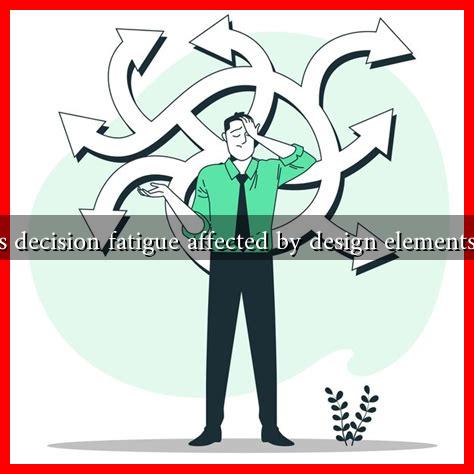-
Table of Contents
Is Decision Fatigue Affected by Design Elements?
In our fast-paced world, the concept of decision fatigue has gained significant attention. It refers to the deteriorating quality of decisions made by an individual after a long session of decision-making. As we navigate through countless choices daily, the design elements of our environments can play a crucial role in either alleviating or exacerbating this fatigue. This article explores how design influences decision fatigue and offers insights into creating more effective decision-making environments.
Understanding Decision Fatigue
Decision fatigue occurs when the brain becomes overwhelmed by the sheer volume of choices it faces. This phenomenon can lead to poor decision-making, procrastination, or even decision avoidance. Research by Baumeister et al. (1998) indicates that willpower is a finite resource, and as it depletes, our ability to make sound decisions diminishes. This is particularly relevant in contexts where individuals are required to make numerous decisions in a short period, such as in retail, healthcare, or even personal life.
The Role of Design Elements
Design elements encompass various aspects, including layout, color, typography, and overall aesthetics. These elements can significantly influence how we perceive choices and the ease with which we make decisions. Here are some key design factors that can affect decision fatigue:
- Clarity and Simplicity: A clean and straightforward design can reduce cognitive load. For instance, websites with cluttered interfaces can overwhelm users, leading to decision fatigue. A study by the Stanford Web Credibility Research found that users are more likely to trust and engage with websites that have a simple design.
- Visual Hierarchy: Effective use of visual hierarchy guides users through choices. For example, e-commerce sites often highlight best-selling products or special offers, making it easier for consumers to make quick decisions.
- Color Psychology: Colors can evoke emotions and influence decisions. Research shows that colors like blue can create a sense of calm, while red can increase urgency. Brands often use these principles to design their marketing materials and product displays.
- Feedback Mechanisms: Providing immediate feedback on choices can help users feel more confident in their decisions. For example, when users select an option on a website, a visual confirmation can reinforce their choice and reduce second-guessing.
Case Studies and Real-World Examples
Several companies have successfully implemented design strategies to combat decision fatigue:
- Amazon: The e-commerce giant uses a minimalist design with clear categories and personalized recommendations. This approach helps users navigate through millions of products without feeling overwhelmed.
- Netflix: By employing a simple interface and personalized content suggestions, Netflix reduces the cognitive load on users, allowing them to make quicker viewing decisions.
- Apple: Apple’s product launches are known for their simplicity and clarity. The company focuses on a few key products, allowing consumers to make decisions without feeling overwhelmed by options.
Statistics on Decision Fatigue and Design
Research supports the idea that design can significantly impact decision fatigue:
- A study published in the Journal of Consumer Research found that consumers faced with too many choices were less likely to make a purchase.
- According to a report by the Nielsen Norman Group, users take only 50 milliseconds to form an opinion about a website’s design, which can influence their decision to stay or leave.
- Research from the University of California, San Diego, indicates that simplifying choices can lead to a 20% increase in decision-making efficiency.
Conclusion
In conclusion, decision fatigue is a significant challenge in our daily lives, but thoughtful design elements can mitigate its effects. By focusing on clarity, visual hierarchy, color psychology, and feedback mechanisms, designers can create environments that facilitate better decision-making. As we continue to navigate an increasingly complex world, understanding the interplay between design and decision fatigue will be crucial for businesses, educators, and individuals alike. By leveraging effective design strategies, we can empower ourselves and others to make more informed and confident decisions.
For further reading on decision fatigue and its implications, consider exploring resources from the American Psychological Association or the Stanford Graduate School of Business.


